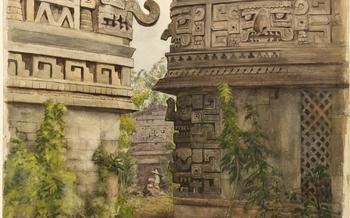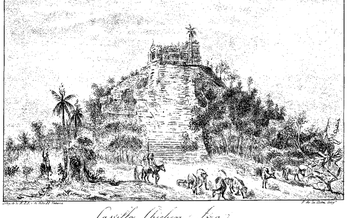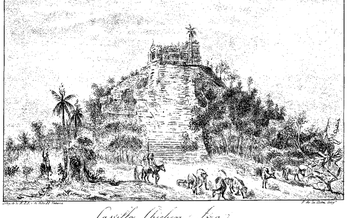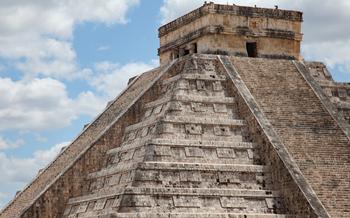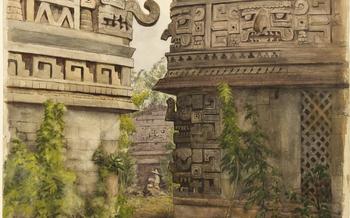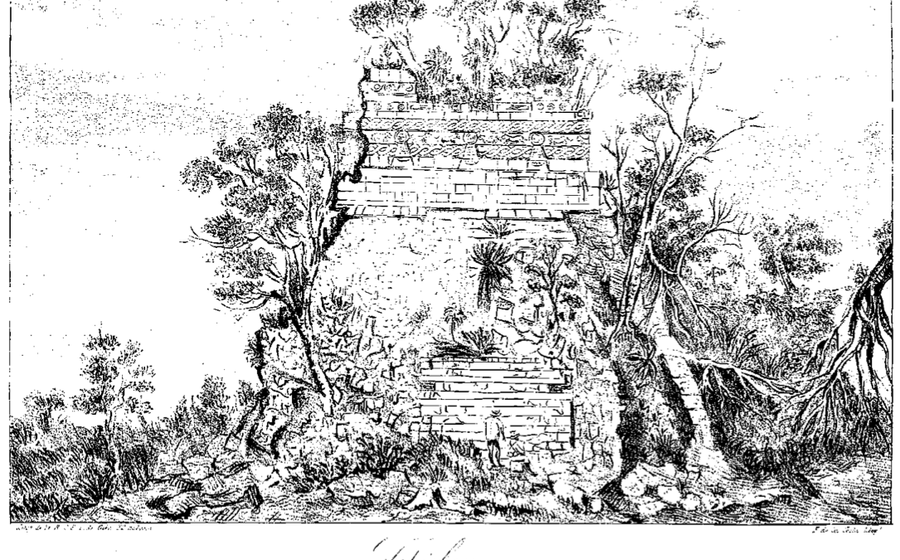
Cenote Palomitas
- Surrounding the Cenote: A Realm of Natural Wonders
- Tips for a Memorable Visit
- Transportation to Chichen Itza
- Entrance Fees and Visiting Hours
- Exploring the Cenote
- Local Guides and Tours
- What to Wear and Bring
- Photography Tips
- Dining and Accommodation
- History and Significance
- Safety Precautions
- Insider Tip: Unveiling a Hidden Gem
Surrounding the Cenote: A Realm of Natural Wonders
Nestled amidst the lush vegetation of the Yucatan Peninsula, the Cenote Palomitas emerges as an enchanting natural wonder. Its crystal-clear waters, framed by towering limestone cliffs, invite visitors to dive into a realm of tranquility and awe. The surrounding area is an ecological paradise, teeming with diverse flora and fauna. Ancient trees stand guard, their branches reaching towards the sky, providing shade and a sense of reverence. Birds flutter their wings in harmonious melodies, creating a symphony that echoes through the air. The air itself carries the scent of jasmine and wild orchids, intoxicating the senses and creating a truly magical atmosphere.
Tips for a Memorable Visit
Recommended time to visit the cenote for the best experience: Plan your visit during the dry season, typically between November and April, for optimal weather conditions. Aim to arrive early in the morning to avoid crowds and capture the ethereal beauty of the cenote under the golden rays of the rising sun. The serene atmosphere during this time allows for a tranquil and immersive experience.
Essential gear to bring for swimming and exploring the cenote: Pack swimwear, towels, and a change of clothes. Remember to bring water shoes or sandals to protect your feet from the rocky terrain and slippery surfaces. A waterproof camera or phone case is a must to capture stunning underwater shots of the cenote's vibrant ecosystem.
Safety guidelines to follow while swimming in the cenote: Always swim within designated areas and avoid diving from high ledges. Be aware of your surroundings and stay clear of sharp rocks and underwater currents. If you're not a strong swimmer, consider wearing a life jacket for added safety.
Respectful behavior towards the sacred nature of the cenote: Remember that the cenote holds deep spiritual and cultural significance for the Mayan people. Refrain from loud noises, disrespectful behavior, and littering. Honor the sacredness of the site by maintaining a respectful and mindful attitude throughout your visit.
Transportation to Chichen Itza
Reaching Chichen Itza is a breeze, with a variety of transportation options available. From major cities like Cancun, Playa del Carmen, and Merida, you can hop on a comfortable bus or shuttle that will whisk you directly to the ancient city. These buses and shuttles are reliable, affordable, and offer a hassle-free journey.
If you prefer a more personalized experience, guided tours and organized excursions are aplenty. These tours often include round-trip transportation, entrance fees, and the services of a knowledgeable guide who will share fascinating insights into the history and significance of Chichen Itza.
For those who love the freedom of the open road, self-driving to Chichen Itza is a fantastic option. The drive from Cancun takes about 2 hours, while from Playa del Carmen it's approximately 1 hour and 30 minutes. Ample parking is available near the site, making it easy to park your car and start exploring.
Transportation costs vary depending on your chosen mode of travel. Buses and shuttles typically range from $20 to $40 per person, while guided tours can cost anywhere from $50 to $100. Self-driving offers the most flexibility and can be more economical if you're traveling with a group.
Entrance Fees and Visiting Hours
Visiting Chichén Itzá and the Cenote Palomitas comes with specific entrance fees and visiting hours. The current entrance fee for Chichén Itzá is 800 MXN (Mexican pesos) for international visitors and 200 MXN for Mexican nationals and residents. Children under 12 years old enter free of charge. Discounts are available for students and seniors with valid identification.
The cenote is accessible during the same hours as Chichén Itzá, which are from 8:00 AM to 5:00 PM daily. However, it's worth noting that the cenote may have varying hours during peak tourist seasons or special events. It is advisable to check the official website or with local authorities for the most up-to-date information on entrance fees and visiting hours.
To avoid crowds and enjoy a serene experience, consider visiting the cenote early in the morning or late in the afternoon. During these times, you'll have a better chance of having the cenote to yourself and fully immersing yourself in its tranquil atmosphere. Advance booking options are available for tickets, which can be purchased online or through authorized tour operators. This can save you time and ensure a hassle-free visit, especially during peak tourist seasons.
Exploring the Cenote
Cenote Palomitas boasts an awe-inspiring natural beauty that captivates visitors from the moment they lay eyes on it. Its crystal-clear waters shimmer in shades of turquoise and emerald, reflecting the lush vegetation that surrounds the cenote. The cenote's depth varies from 20 to 50 feet, creating a captivating underwater world teeming with diverse marine life. Unique rock formations and stalactites adorn the cenote's walls, adding to its mystical charm. Guided tours are available for those who wish to delve deeper into the cenote's history and significance. Snorkeling enthusiasts can immerse themselves in the cenote's crystal-clear waters to discover a vibrant underwater ecosystem, home to colorful fish, turtles, and other aquatic wonders. Safety measures are in place to ensure that visitors have a safe and enjoyable experience while exploring the cenote's depths.
Local Guides and Tours
Enhancing your Chichén Itzá experience with a knowledgeable local guide can be immensely rewarding. These guides offer a wealth of insights into Mayan history, culture, and the significance of the cenote. They can provide captivating narratives, explain intricate details, and answer your questions, bringing the site to life in an unforgettable way.
Recommended Tour Operators and Guides
Several reputable tour operators and guides offer a range of guided tours tailored to different interests and preferences. Look for companies that prioritize responsible tourism practices and employ certified guides who are passionate about sharing their knowledge.
Cost Range for Guided Tours
Guided tours typically range from $50 to $150 per person, depending on the tour duration, group size, and inclusions. Some tours may offer additional fees for specialized services such as private transportation or personalized itineraries.
Booking a Guided Tour in Advance
To secure your spot on a preferred tour, it's advisable to book in advance, especially during peak tourist seasons. Online booking platforms and tour operators' websites often provide convenient options for reservations.
What to Wear and Bring
When preparing for your visit to the Cenote Palomitas and Chichén Itzá, it's crucial to pack appropriately to ensure a comfortable and enjoyable experience. Opt for lightweight, breathable clothing that allows for freedom of movement while exploring the ruins. Choose sturdy footwear with good traction to navigate uneven surfaces and prevent slipping.
Swimwear is essential for taking a dip in the cenote's refreshing waters. Consider bringing a towel for drying off afterward. Sun protection is vital, so pack a hat, sunglasses, and a high-SPF sunscreen to shield your skin from the intense tropical sun.
Stay hydrated by bringing a reusable water bottle to refill at designated stations within the site. Pack light snacks to keep your energy levels up throughout the day. A camera is a must-have to capture the breathtaking beauty of the cenote and the ancient ruins. Consider bringing a waterproof bag to protect your electronics from water splashes.
Photography Tips
Capture the Cenote's Allure: Showcase the cenote's mesmerizing beauty through stunning photographs. Experiment with different angles and perspectives to capture its unique features, such as the crystal-clear waters, lush vegetation, and dramatic rock formations.
Embrace Natural Light: Utilize natural light to enhance your photographs. The best time to capture the cenote's essence is during the golden hours of sunrise and sunset when the warm light illuminates the cenote, creating a magical ambiance.
Explore Underwater Wonders: Snorkeling or diving in the cenote offers a chance to capture the vibrant underwater world. Use a waterproof camera or housing to capture the diverse marine life, including colorful fish, turtles, and other aquatic creatures.
Play with Reflections: Take advantage of the cenote's crystal-clear waters to create stunning reflections. Experiment with different angles and positions to capture the cenote's surface mirroring the surrounding landscape, creating a mesmerizing effect.
Respect the Sacred Site: While capturing the cenote's beauty, remember to respect its sacred nature. Avoid using flash photography, as it can disturb the delicate ecosystem and disrupt the serenity of the site.
Dining and Accommodation
After a day of exploring the cenote and Chichén Itzá, you'll likely be ready to refuel and rest. Fortunately, there are plenty of dining and accommodation options in the vicinity to suit various budgets and preferences.
For a taste of authentic Mayan cuisine, try the local restaurants and cafes near Chichén Itzá. These establishments offer a range of traditional dishes, including cochinita pibil (slow-roasted pork), panuchos (tortillas filled with refried beans and topped with meat or vegetables), and salbutes (fried tortillas topped with turkey, lettuce, and tomato).
If you prefer a more upscale dining experience, several luxurious resorts in the area offer fine dining restaurants with Mayan-inspired menus and panoramic views of the surrounding landscape.
For accommodation, there are options ranging from budget-friendly hostels to luxurious resorts. Hostels provide a social and affordable option for backpackers and budget travelers, while resorts offer a range of amenities and services for a more comfortable and indulgent stay.
To save money, consider booking your accommodations in advance, especially during peak tourist season. Research online platforms and travel agencies to find the best deals and discounts.
History and Significance
Chichén Itzá, a marvel of the Mayan civilization, holds a rich history and profound significance. This ancient city was once a thriving political and religious center, leaving behind an enduring legacy. As you explore the ruins, you'll discover intricate carvings, towering pyramids, and awe-inspiring temples that narrate stories of a bygone era.
The cenote, a natural wonder at the heart of Chichén Itzá, played a pivotal role in Mayan culture. It served as a sacred site for religious rituals and ceremonies. The Mayans believed that cenotes were portals to the underworld, a place where they could communicate with their ancestors and seek guidance from the gods.
The cenote's significance extended beyond its spiritual importance. It was also a vital source of water for the Mayan community, sustaining life and agriculture in the region. The Mayans constructed elaborate systems of canals and reservoirs to harness the cenote's water for irrigation and domestic use.
Chichén Itzá's historical and cultural significance has earned it recognition as a UNESCO World Heritage Site. This designation underscores the site's outstanding universal value, inviting travelers from around the world to explore its captivating ruins and immerse themselves in the rich legacy of the Mayan civilization.
Safety Precautions
Always prioritize safety when exploring the cenote and Chichén Itzá. Avoid swimming alone, especially in deeper areas of the cenote. Stay within designated swimming areas marked by buoys or ropes. The cenote's bottom can be uneven, so wear appropriate footwear to prevent slipping on slippery surfaces. Be aware of potential wildlife encounters, such as snakes or insects, and respect their habitat. If you have any concerns or questions, don't hesitate to ask a lifeguard or a member of the staff for assistance. Following these safety guidelines will ensure a safe and enjoyable experience for all visitors.
Insider Tip: Unveiling a Hidden Gem
While exploring the wonders of Chichén Itzá, don't miss the opportunity to discover a hidden gem—a lesser-known cenote nestled just a short distance away. This secluded oasis offers a tranquil retreat from the crowds, allowing you to immerse yourself in the serene beauty of nature.
To find this hidden treasure, venture off the beaten path and seek local advice. Ask your guide or a friendly local about the cenote's whereabouts, and they will gladly point you in the right direction. The journey to the cenote is an adventure in itself, as you navigate through lush vegetation and encounter the wonders of the Yucatán Peninsula.
Upon arriving at the hidden cenote, you will be greeted by a breathtaking sight. Crystal-clear waters shimmer in the sunlight, inviting you to take a refreshing dip. The cenote's secluded location creates an intimate atmosphere, allowing you to connect with nature and experience the tranquility of this sacred place.
Remember to approach this hidden gem with respect and responsibility. Follow sustainable tourism practices, avoid disturbing the wildlife, and leave no trace of your visit. Embrace the opportunity to immerse yourself in the beauty of this hidden cenote while preserving its pristine condition for future generations to cherish.



